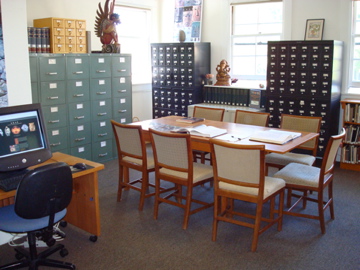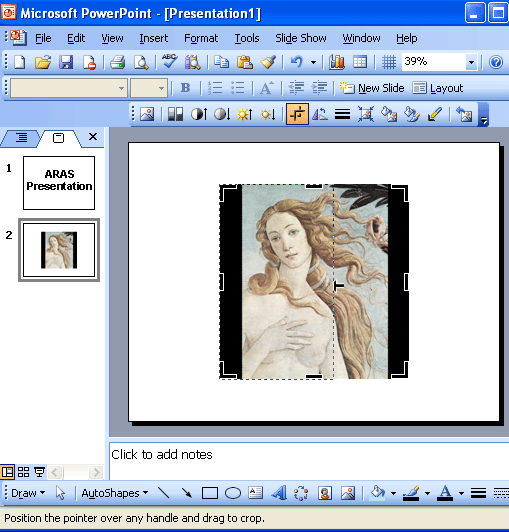 News from ARAS• 2008 • Issue 2 • News from ARAS• 2008 • Issue 2 •
| Introduction |
 |
 Although summer has not yet officially been designated as "National Amplification Time," that's what it is unofficially for many of us. What I mean by this is simple. Summer is the time when we allow our minds to relax and to roam, to follow threads of thought and image that the hard work of other seasons does not permit. I just went to the book store to purchase summer reading that I would not have the time or ease to read at any other time of year and I look forward to letting my mind take unexpected paths that may in time become part of an inner store house of stories and anecdotes that will contribute to the process of amplification I do with myself and my patients. Although summer has not yet officially been designated as "National Amplification Time," that's what it is unofficially for many of us. What I mean by this is simple. Summer is the time when we allow our minds to relax and to roam, to follow threads of thought and image that the hard work of other seasons does not permit. I just went to the book store to purchase summer reading that I would not have the time or ease to read at any other time of year and I look forward to letting my mind take unexpected paths that may in time become part of an inner store house of stories and anecdotes that will contribute to the process of amplification I do with myself and my patients.
In the spirit of "National Amplification Time", we are featuring in this newsletter a fine article by Harry Prochaska, "The Purpose of Amplification." Defining "amplification" is a bit like trying to define the "purpose of summer reading"--but for those of us who indulge in both, it is a process of letting the mind move naturally from one image and idea to the next without a preconceived path or goal in terms of how and where one is going. We are also including an educational article by Jeff Levinsky who describes how one can use ARAS images in PowerPoint presentations. This is a very practical and important use of ARAS for those who are trying to find a way to use the ARAS collection in educational settings. If amplification tends to stimulate the imagination, PowerPoint tends to focus the mind when it is used well. But, I hope that this issue of ARAS Online is not seen to be suggesting that we should be creating PowerPoint presentations out of the amplificatory journeys of our summer reading.
Amplification is a state of mind, and such states of mind need to be cultivated by being in the right place at the right time. Torben Gronning's picture of the San Francisco Jung Institute's ARAS space shows a perfect place for cultivating the art of amplification. We all need the right time and space to take the deeply rewarding journey of amplification.
Tom Singer, M.D.
Co-Chair of the ARAS Online Committee |
Send Us Your Questions |
 |
| If you have questions about specific images, searching, how to use ARAS, or archetypal symbolism in general, please email them to us at info@aras.org. |
|
 |
| The Purpose of Amplification |
 |
From Amplification of Symbols by Harry Prochaska
The birth of a child, the death of a parent are occasions which activate the archetypal substrata which support our common lives. To recognize universal themes when we go through such initiatory experiences grounds us in a process larger than these personal events; they give consolation in moments of crisis as well as support in the daily repetition of the ordinary events of livings. We are thrown into the vortex of the human process; we, ourselves, becomes events in human history, perhaps anonymous, but none the less essential to its evolution in a particular time and place. These events take us beyond the personal into the great chain of being of which we are a part. The positive accomplishments and the negative aberrations are parts of the evolutionary process and we must accept them all as factors in the equation. One reason, beyond pure human sympathy, that child abuse may evoke such outrage is that it is racial suicide, for we are the agents of the renewal of the race, and the violation and sacrifice of a child is an obscene denial of one's responsibility in the process.
These initiatory events are preserved and recalled in the symbolic structure of our psyches. Such structures are configurations of images precipitated from the unconscious by the feeling and affect associated with such events, those encounters with other persons and with institutions which are the part and parcel of the minutes and hours of the passing days.
For many people such configurations are derived unconsciously from the cultural and religious institutions in which they live; they may not be aware of the generating energy and feelings which the symbols both preserve and evoke, nor of their sources in the cultural and collective unconscious. As each person becomes more aware of those symbols which have numinosity for him, he can begin to recognize which of them evolve from his own personal associations with occasions and persons, and which arise from the deeper layers of the psyche. Since an archetype itself exists within the unconscious, it is unconscious also. As we know about electricity only from its manifestations, so we only know of archetypes from the images which they generate in dreams and in our mental and physical behavior patterns. An increase in energy around a configuration of events and our reaction to it provide clues for us to recognize that an archetype has been touched. It is all too easy, because of the immediate power of an event to be caught in the moment and to believe it as a total statement of reality. If, however, we can recognize the moment as only one manifestation in a specific form, we can relate it to similarly generated moments for other persons in other times and places. The archetypal patter, the underlying energy then becomes visible and recognizable. An Archetype (a pattern of energy) crystallizes out of the unconscious. The patterns are expressed in symbols and by amplification of those symbols we can find the layers of meaning which every symbol carries. Because of this layering a symbol always carries connotative values; it is not a one to one equivalent.
Click here to see images and the rest of this article |
ARAS in San Francisco |
 |
|
The archive in San Francisco is a pleasant place to work and study!
 |
|
 
ARAS Hint: Placing ARAS Images in PowerPoint Presentations |
 |
By Jeff Levinsky, Project Director - ARAS Online
It's easy to include ARAS images in your PowerPoint talks. Here's how:
1) Use ARAS Online to find the image you want. Be sure to choose a full-sized image on a "record page," where the commentary is on the right side. Then, put your mouse over the image and copy it onto your clipboard. For example, in Windows (see example on right), simply right-click and select Copy.
|

|
2) Switch to PowerPoint and pick the slide that you want the image to go into.
|
|
|
3) Put your mouse over that slide and paste from the clipboard. In Windows (see example on right), simply right-click and select Paste.
|

&nbps; |
4) You can now stretch and move the image around on your PowerPoint slide to fit your needs. Stretch the image by clicking on it once and then dragging any corner. Move an image by clicking on it once and then dragging the interior. It's OK if parts of the images extend beyond the edge of the slide, as these won't show when you project the slide.
PowerPoint also lets you crop images. You'll need the Picture Toolbar, which is sometimes hidden. To unhide it in PowerPoint 2003, right-click and choose Show Picture Toolbar. Then click on the toolbar's crop tool and drag the pictures edges to crop them out (see example on right).
|

|
| Technical tip: if you want to show a highly-magnified part of an image, you'll get a sharper picture if you first zoom in within ARAS by clicking on the image in the record and then copy that enlarged image over to your PowerPoint slide. |
|
|
 |
 |
| This newsletter comes to you from ARAS, a non-profit organization. Visit our web site. Become a member by joining online. If you do not wish to receive these e-mail newsletters in the future, please reply with the words "Remove Me" in the subject line. Copyright © 2008 ARAS. All Rights Reserved. |
 |
 |
| ARAS |
28th East 39th |
New York City, NY 10016 |
info@aras.org |
(646) 536-2632 |
|
|

